The impact of audio
Have you ever watched a scary movie with the sound off? Then you know that the movie is not nearly as scary all of a sudden. That's the effect music and sound effects have on the experience. Maarten de Groot is audio designer at C4Real. Together with C4Real owner Ton Kuper, he talks about the impact of audio in visual productions.
Let's start with some definitions. By audio we mean several elements:
1. Voice-overs: this is a voice that provides off-screen commentary in a film;
2. Sound effects and background sounds that provide ambience;
3. The music composition you hear while watching the image. Preferably it was created specifically for the visualization.
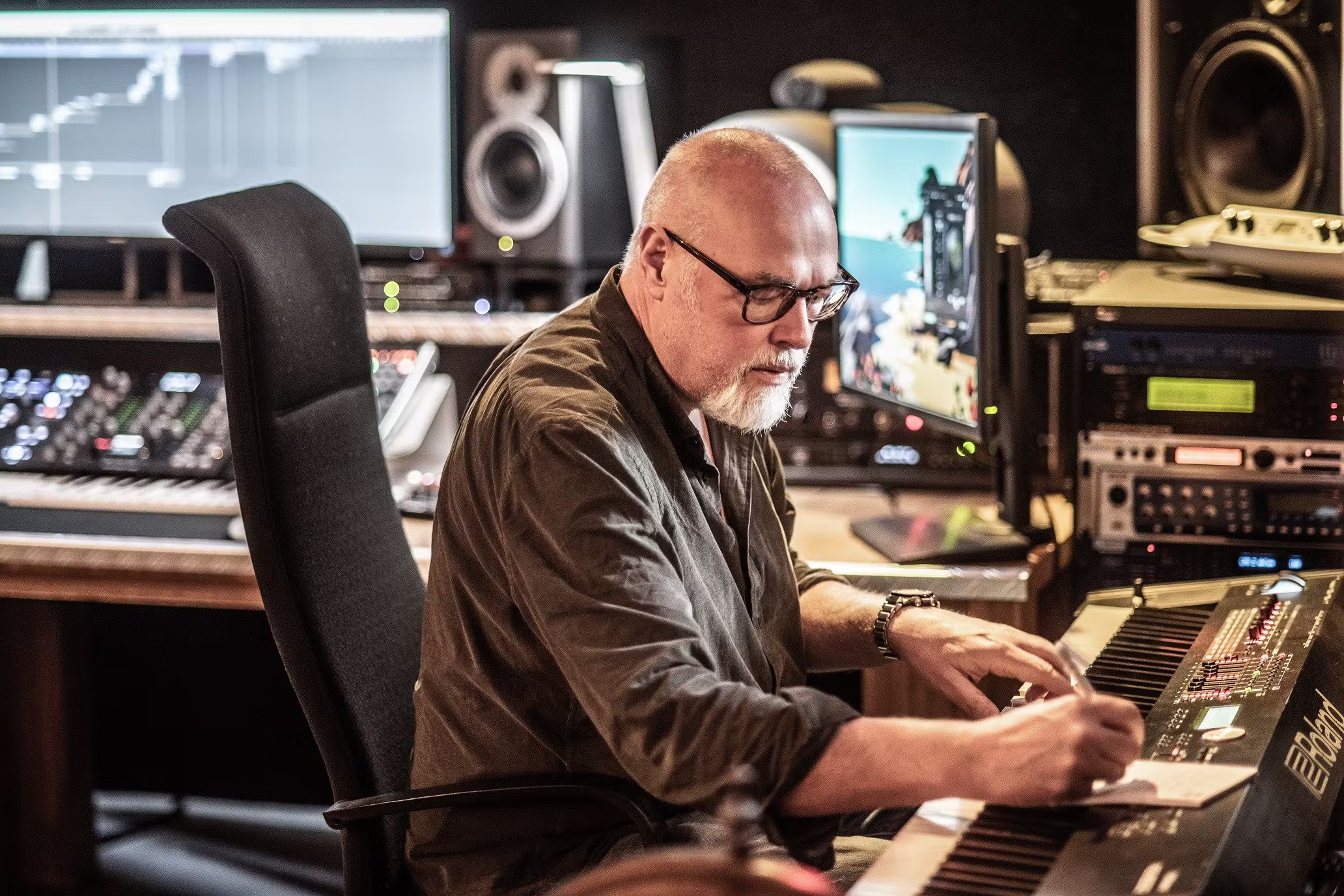
Music is emotion
Maarten prefers to step into a visual production that is already completely finished. Then the timing is already perfect and it is clear which image will be seen for how many seconds at which moment. This is where he gets to work: "My main goal is to reproduce the emotion that fits the images perfectly in music and other audio components. First I watch the film several times and then I play some music with it to establish the feeling. Usually this is piano or a small synthesizer. Eventually it can become "minimal music," or it can be a heavy composition that is very bombastic. We've even once come up with the vocal lines for a singer to be sung in for a video. It can go that far."
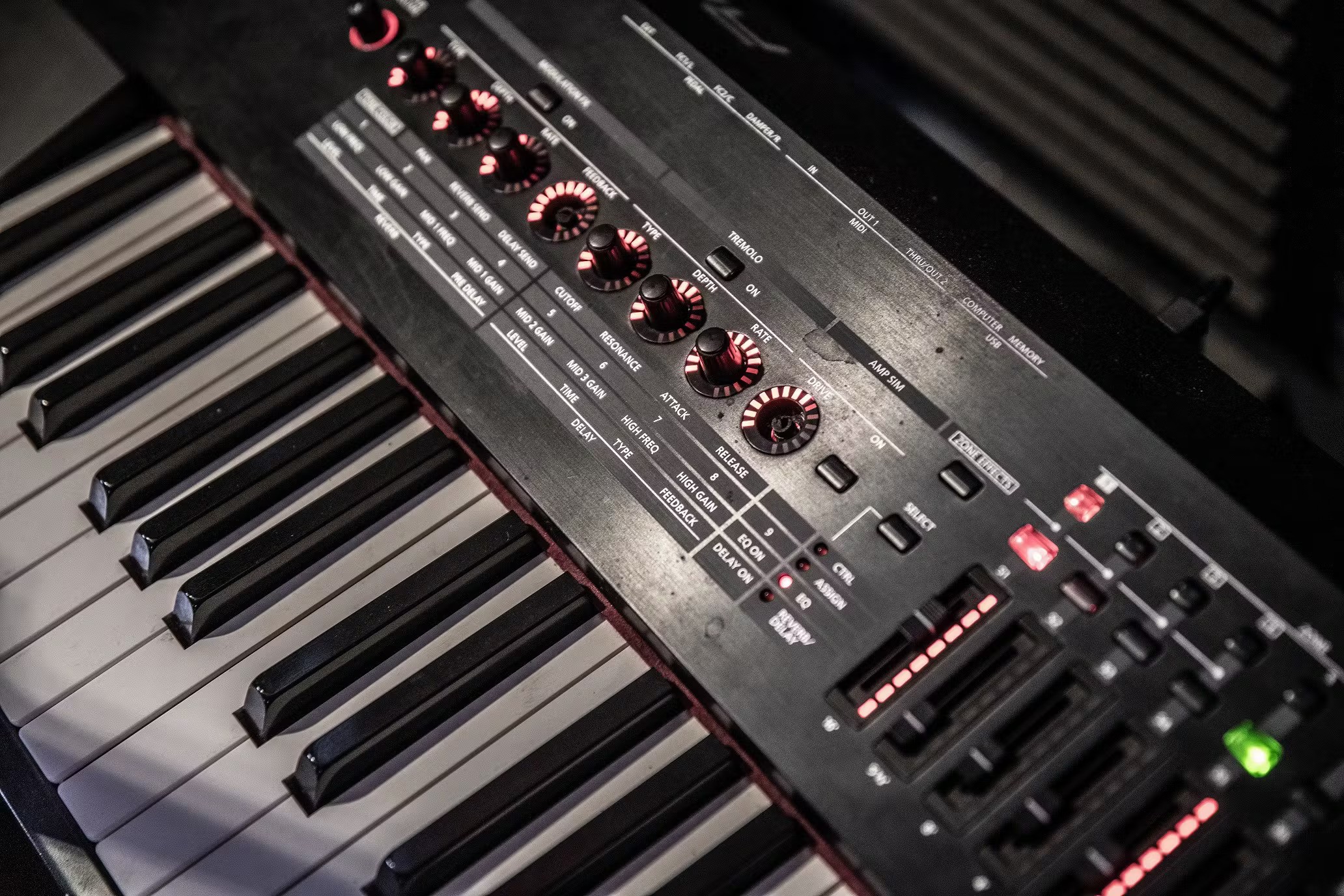
Different categories of film music
As with anything, music comes in all shapes and sizes. The simplest category is stock music. This works similarly to stock photos: you buy a piece of music online and stick it under the visual production. Of course, this is not specifically composed for the production and therefore it quickly comes across as somewhat generic or even cheap. Other companies may also use the same music. For budget reasons, some clients choose stock music, but we do not recommend it.
The second category is music loops. In these, the beat, melody and other parts can be used separately. We use these already developed loops as a modular system under the visualization. The music then already fits the production better, because you can tailor it better, but in principle it is still not completely unique.
The last category is music composed specifically for the visual production. With this you make the most impact. You can also fine-tune everything in terms of timing so that image and sound reinforce each other optimally. And the great thing is: no one has this music at their disposal, only your company. The effect is huge, because the music optimally emphasizes every detail that appears on screen with sound. This draws the viewer into the story creating an emotional connection between the viewer and the visualization.
Have you ever watched a scary movie with the sound off? Then you know that the movie is not nearly as scary all of a sudden. That's the effect music and sound effects have on the experience. Maarten de Groot is audio designer at C4Real. Together with C4Real owner Ton Kuper, he talks about the impact of audio in visual productions.
Let's start with some definitions. By audio we mean several elements:
1. Voice-overs: this is a voice that provides off-screen commentary in a film;
2. Sound effects and background sounds that provide ambience;
3. The music composition you hear while watching the image. Preferably it was created specifically for the visualization.

Music is emotion
Maarten prefers to step into a visual production that is already completely finished. Then the timing is already perfect and it is clear which image will be seen for how many seconds at which moment. This is where he gets to work: "My main goal is to reproduce the emotion that fits the images perfectly in music and other audio components. First I watch the film several times and then I play some music with it to establish the feeling. Usually this is piano or a small synthesizer. Eventually it can become "minimal music," or it can be a heavy composition that is very bombastic. We've even once come up with the vocal lines for a singer to be sung in for a video. It can go that far."

Different categories of film music
As with anything, music comes in all shapes and sizes. The simplest category is stock music. This works similarly to stock photos: you buy a piece of music online and stick it under the visual production. Of course, this is not specifically composed for the production and therefore it quickly comes across as somewhat generic or even cheap. Other companies may also use the same music. For budget reasons, some clients choose stock music, but we do not recommend it.
The second category is music loops. In these, the beat, melody and other parts can be used separately. We use these already developed loops as a modular system under the visualization. The music then already fits the production better, because you can tailor it better, but in principle it is still not completely unique.
The last category is music composed specifically for the visual production. With this you make the most impact. You can also fine-tune everything in terms of timing so that image and sound reinforce each other optimally. And the great thing is: no one has this music at their disposal, only your company. The effect is huge, because the music optimally emphasizes every detail that appears on screen with sound. This draws the viewer into the story creating an emotional connection between the viewer and the visualization.
Have you ever watched a scary movie with the sound off? Then you know that the movie is not nearly as scary all of a sudden. That's the effect music and sound effects have on the experience. Maarten de Groot is audio designer at C4Real. Together with C4Real owner Ton Kuper, he talks about the impact of audio in visual productions.
Let's start with some definitions. By audio we mean several elements:
1. Voice-overs: this is a voice that provides off-screen commentary in a film;
2. Sound effects and background sounds that provide ambience;
3. The music composition you hear while watching the image. Preferably it was created specifically for the visualization.

Music is emotion
Maarten prefers to step into a visual production that is already completely finished. Then the timing is already perfect and it is clear which image will be seen for how many seconds at which moment. This is where he gets to work: "My main goal is to reproduce the emotion that fits the images perfectly in music and other audio components. First I watch the film several times and then I play some music with it to establish the feeling. Usually this is piano or a small synthesizer. Eventually it can become "minimal music," or it can be a heavy composition that is very bombastic. We've even once come up with the vocal lines for a singer to be sung in for a video. It can go that far."

Different categories of film music
As with anything, music comes in all shapes and sizes. The simplest category is stock music. This works similarly to stock photos: you buy a piece of music online and stick it under the visual production. Of course, this is not specifically composed for the production and therefore it quickly comes across as somewhat generic or even cheap. Other companies may also use the same music. For budget reasons, some clients choose stock music, but we do not recommend it.
The second category is music loops. In these, the beat, melody and other parts can be used separately. We use these already developed loops as a modular system under the visualization. The music then already fits the production better, because you can tailor it better, but in principle it is still not completely unique.
The last category is music composed specifically for the visual production. With this you make the most impact. You can also fine-tune everything in terms of timing so that image and sound reinforce each other optimally. And the great thing is: no one has this music at their disposal, only your company. The effect is huge, because the music optimally emphasizes every detail that appears on screen with sound. This draws the viewer into the story creating an emotional connection between the viewer and the visualization.
Credibility is key
Creating a music composition is real craftsmanship. So is recording a voice-over. This is a task that requires experience and insight. For each visual we scout a suitable voice-over. We then coach the person for the right voice intonation. This is an important part of getting the right emotion from the voice in the visualization. The viewer should feel that the voice-over is telling the story as if it were his or her own. And not as if it is a string being read out, which unfortunately you often encounter. Credibility is key!
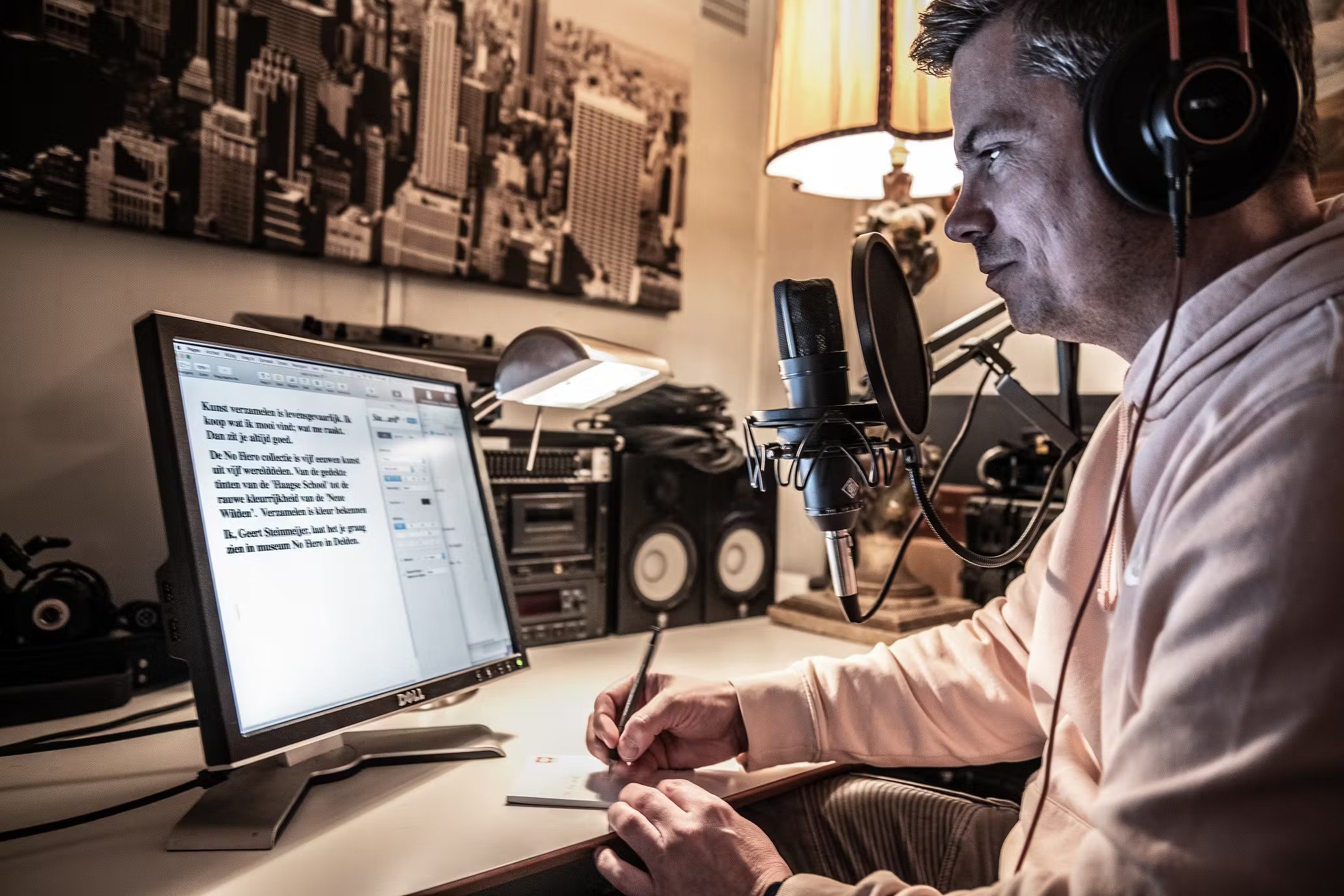
Credibility is key
Creating a music composition is real craftsmanship. So is recording a voice-over. This is a task that requires experience and insight. For each visual we scout a suitable voice-over. We then coach the person for the right voice intonation. This is an important part of getting the right emotion from the voice in the visualization. The viewer should feel that the voice-over is telling the story as if it were his or her own. And not as if it is a string being read out, which unfortunately you often encounter. Credibility is key!

Credibility is key
Creating a music composition is real craftsmanship. So is recording a voice-over. This is a task that requires experience and insight. For each visual we scout a suitable voice-over. We then coach the person for the right voice intonation. This is an important part of getting the right emotion from the voice in the visualization. The viewer should feel that the voice-over is telling the story as if it were his or her own. And not as if it is a string being read out, which unfortunately you often encounter. Credibility is key!

Activating the subconscious mind
Images become so much stronger with the right music underneath, says Ton:" It becomes truly unique with a composed piece instead of thirteen in a dozen. That way you really impress the target audience by conveying the right feeling. You activate something in people's subconscious. We are actually not really aware of what music does to us. It's only when it's missing that we miss it. Research also shows that audio determines 60% of the impact emotionally. In our subconscious we have known this for a long time. This means that you can strongly influence the feeling people have with a brand or product by applying the right music. That's why music is essential for us."
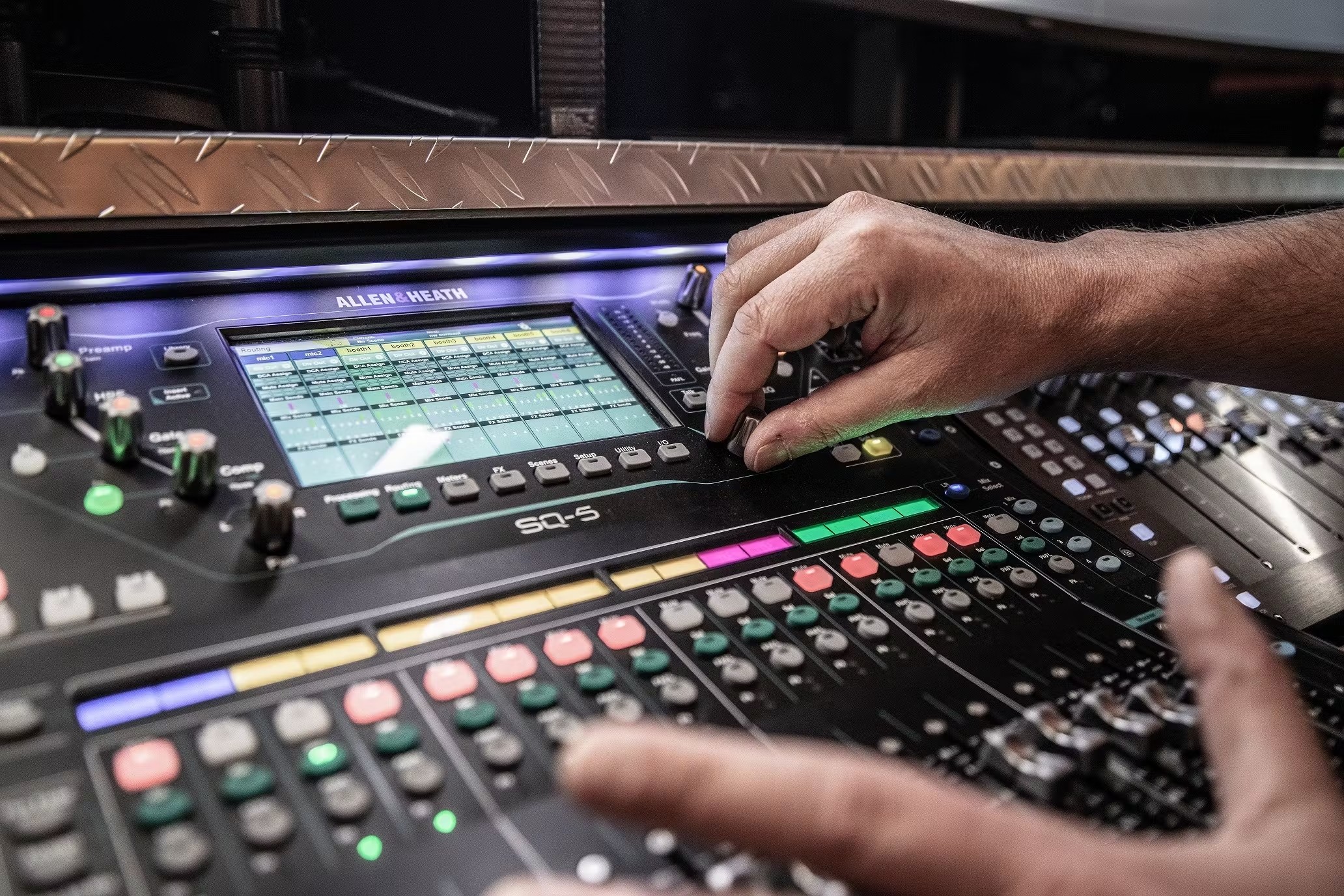
Activating the subconscious mind
Images become so much stronger with the right music underneath, says Ton:" It becomes truly unique with a composed piece instead of thirteen in a dozen. That way you really impress the target audience by conveying the right feeling. You activate something in people's subconscious. We are actually not really aware of what music does to us. It's only when it's missing that we miss it. Research also shows that audio determines 60% of the impact emotionally. In our subconscious we have known this for a long time. This means that you can strongly influence the feeling people have with a brand or product by applying the right music. That's why music is essential for us."

Activating the subconscious mind
Images become so much stronger with the right music underneath, says Ton:" It becomes truly unique with a composed piece instead of thirteen in a dozen. That way you really impress the target audience by conveying the right feeling. You activate something in people's subconscious. We are actually not really aware of what music does to us. It's only when it's missing that we miss it. Research also shows that audio determines 60% of the impact emotionally. In our subconscious we have known this for a long time. This means that you can strongly influence the feeling people have with a brand or product by applying the right music. That's why music is essential for us."

Music must fit well
You can imagine that we don't just put a fast techno song under a video about a healthcare application. Nor do we put a string orchestra under a film about whitewater canoeing. The music has to fit the image. Just as the voiceover must fit the business and the subject of the visualization. In terms of intensity and nuances, everything has to align. Sometimes you want to accentuate something in the visuals and sometimes you want to slow down with the audio. We all think about that before every production. Only then do you make a difference.
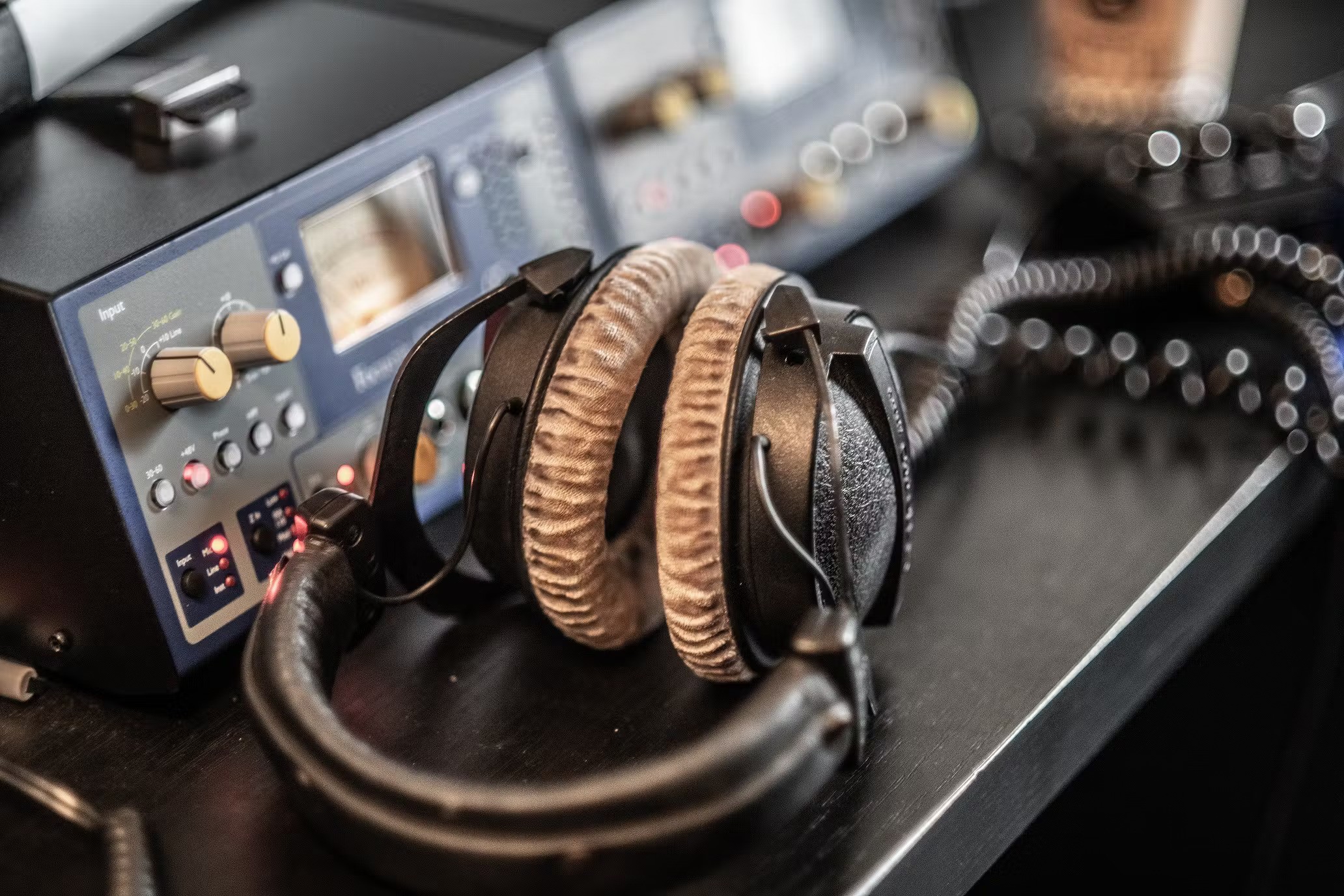
Music must fit well
You can imagine that we don't just put a fast techno song under a video about a healthcare application. Nor do we put a string orchestra under a film about whitewater canoeing. The music has to fit the image. Just as the voiceover must fit the business and the subject of the visualization. In terms of intensity and nuances, everything has to align. Sometimes you want to accentuate something in the visuals and sometimes you want to slow down with the audio. We all think about that before every production. Only then do you make a difference.

Music must fit well
You can imagine that we don't just put a fast techno song under a video about a healthcare application. Nor do we put a string orchestra under a film about whitewater canoeing. The music has to fit the image. Just as the voiceover must fit the business and the subject of the visualization. In terms of intensity and nuances, everything has to align. Sometimes you want to accentuate something in the visuals and sometimes you want to slow down with the audio. We all think about that before every production. Only then do you make a difference.

One step further, 360-degree audio
One step further is binaural audio, audio in which sound is rendered 360 degrees around you. You then hear not only left and right, but 360 degrees from all angles around you, far and near and high or low. A very special experience that can be enjoyed on any headphone. You can imagine that if you combine this with Virtual Reality you get a lifelike experience where you can hardly distinguish between fiction and reality.
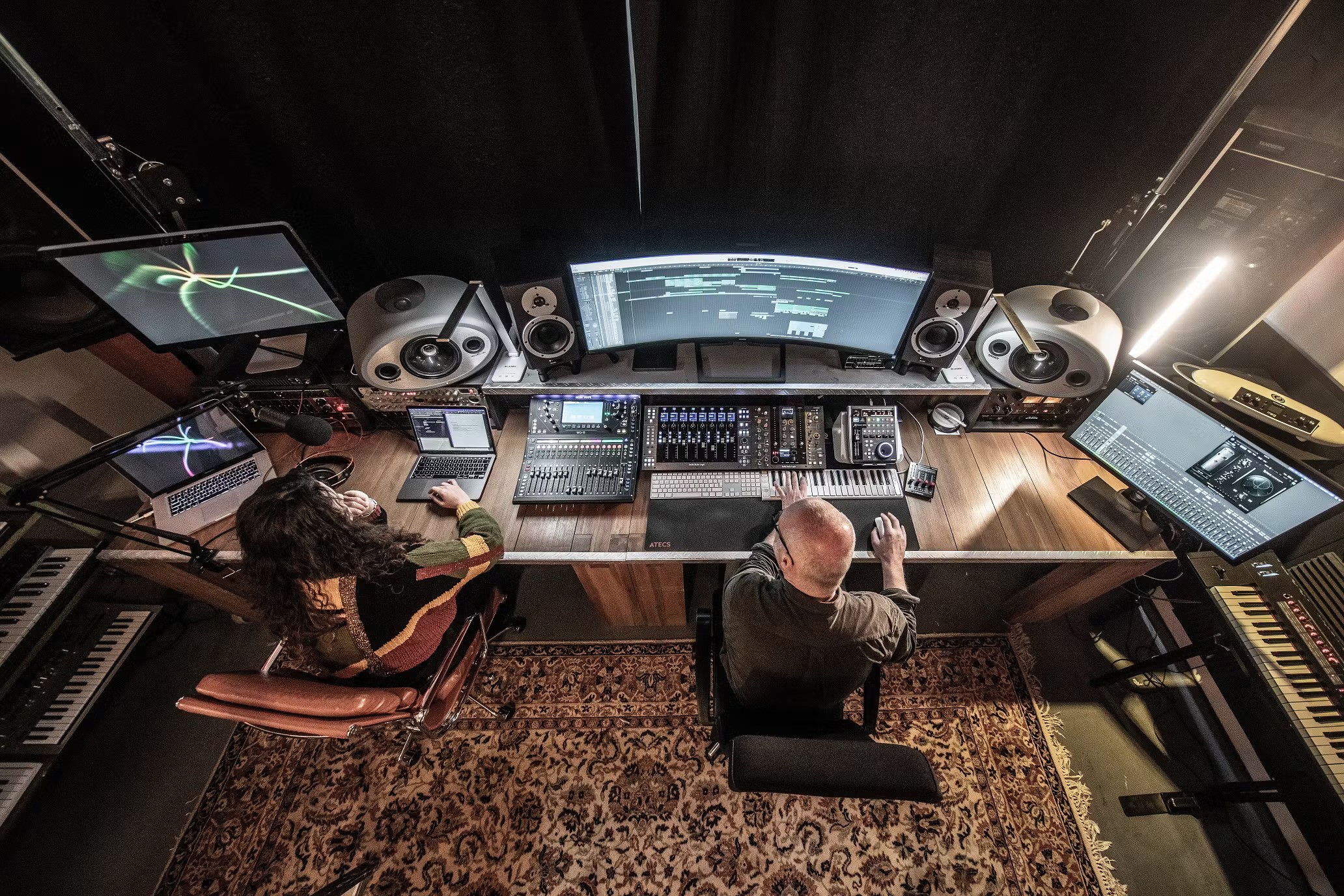
Finally, a few tips:
* No, you cannot just use music by Lady Gaga or DJ Tiësto under a video. That is copyrighted.
* We can buy off certain existing music especially for your application, so that no one else can use the same music under a video.
* By having your own music composed, you are in fact expanding your corporate identity. Your target audience is going to recognize your company at some point by the music you use.
* Do you really want to go the extra mile and have a professional look? Then let us also develop a tune for your brand and have it recur in the intro and or outro of all your videos and animations.
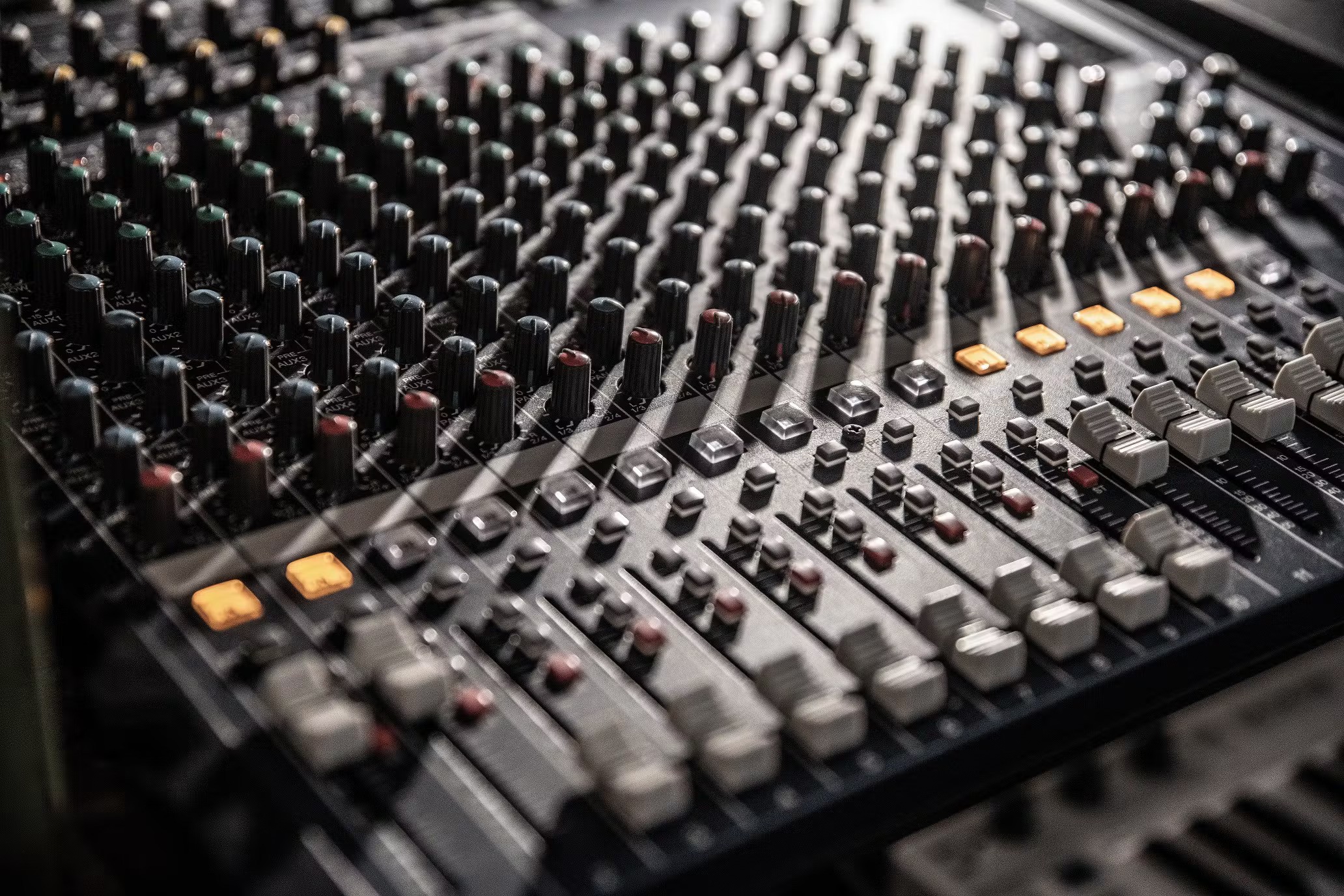
One step further, 360-degree audio
One step further is binaural audio, audio in which sound is rendered 360 degrees around you. You then hear not only left and right, but 360 degrees from all angles around you, far and near and high or low. A very special experience that can be enjoyed on any headphone. You can imagine that if you combine this with Virtual Reality you get a lifelike experience where you can hardly distinguish between fiction and reality.

Finally, a few tips:
* No, you cannot just use music by Lady Gaga or DJ Tiësto under a video. That is copyrighted.
* We can buy off certain existing music especially for your application, so that no one else can use the same music under a video.
* By having your own music composed, you are in fact expanding your corporate identity. Your target audience is going to recognize your company at some point by the music you use.
* Do you really want to go the extra mile and have a professional look? Then let us also develop a tune for your brand and have it recur in the intro and or outro of all your videos and animations.

One step further, 360-degree audio
One step further is binaural audio, audio in which sound is rendered 360 degrees around you. You then hear not only left and right, but 360 degrees from all angles around you, far and near and high or low. A very special experience that can be enjoyed on any headphone. You can imagine that if you combine this with Virtual Reality you get a lifelike experience where you can hardly distinguish between fiction and reality.

Finally, a few tips:
* No, you cannot just use music by Lady Gaga or DJ Tiësto under a video. That is copyrighted.
* We can buy off certain existing music especially for your application, so that no one else can use the same music under a video.
* By having your own music composed, you are in fact expanding your corporate identity. Your target audience is going to recognize your company at some point by the music you use.
* Do you really want to go the extra mile and have a professional look? Then let us also develop a tune for your brand and have it recur in the intro and or outro of all your videos and animations.

Do you have a question or challenge?
Share your story
Do you have a question or challenge? Share your story
CALL +31 (0)85 773 0 733
MAIL info@c4real
Do you have a question
or challenge?
Share your story
CALL +31 (0)85 773 0 733
MAIL info@c4real